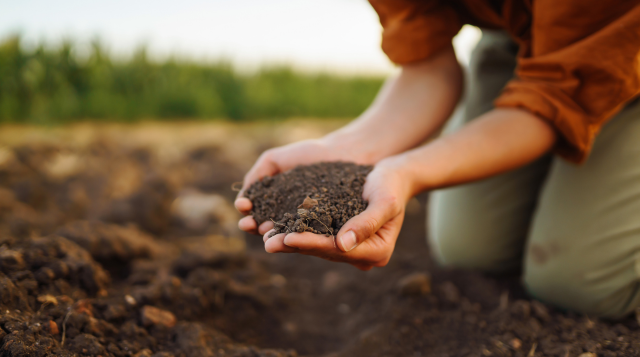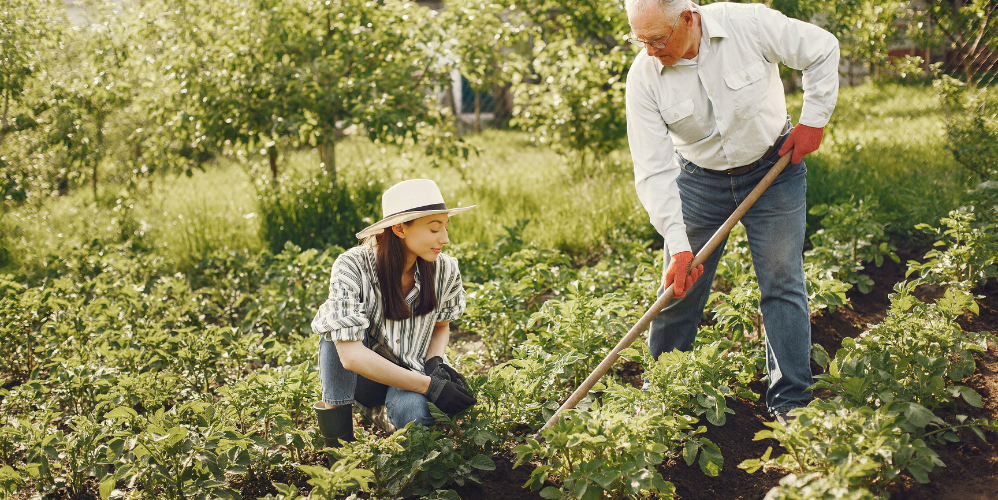How to make compost from watermelon peels:
Composting Watermelon Peels: A Step-by-Step Guide for Urban Gardeners
Introduction:
As an urban gardener, you’re always looking for ways to sustainably manage your food waste and enrich your soil. Fortunately, watermelon peels can be a fantastic addition to your compost pile, providing valuable nutrients and organic matter to nourish your plants. In this comprehensive guide, we’ll walk you through the process of composting watermelon peels, from start to finish, to help you create a nutrient-dense compost that will elevate the health and productivity of your urban garden. compost from watermelon peels
Understanding the Benefits of Composting Watermelon Peels:
Watermelon peels are often overlooked as a compost material, but they can be a valuable addition to your compost pile.
Nutrient-Rich:
Watermelon peels are high in potassium, a crucial nutrient for plant growth and development. They also contain smaller amounts of other essential nutrients like nitrogen, phosphorus, and calcium, which are all vital for healthy soil and plants. compost from watermelon peels
Moisture-Retaining:
The high water content in watermelon peels can help maintain the ideal moisture level in your compost pile, preventing it from drying out too quickly.
Biodegradable:
Watermelon peels break down relatively quickly, providing a steady supply of organic matter to your compost.
Pest Deterrent:
Some studies suggest that the citrusy aroma of watermelon peels can deter certain pests, like ants and rodents, from your compost pile.
By composting your watermelon peels, you’re not only reducing food waste, but also creating a nutrient-rich soil amendment that will greatly benefit your urban garden.

Gathering Supplies and Preparing the Compost Pile
Before you can start composting your watermelon peels, you’ll need to gather a few supplies and set up your compost pile.
Supplies Needed:
- Watermelon peels (washed and chopped into smaller pieces)
- Shredded dry materials (such as dry leaves, straw, or shredded paper)
- Garden fork or compost turner
- Compost bin or designated composting area
- Water (spray bottle or hose)
- Thermometer (optional)
Step 1: Choose a Composting Location
Select a suitable location for your compost pile, preferably in a shaded area that’s easily accessible. Ensure the area is well-drained and has good air circulation to promote proper decomposition. compost from watermelon peels
Also Read: How to earn money from Instagram?
Step 2: Construct the Compost Pile
Begin by creating a base layer of dry, carbon-rich materials, such as dry leaves, straw, or shredded paper. This will help aerate the bottom of the pile and provide a solid foundation. compost from watermelon peels
Step 3: Add the Watermelon Peels
Once the base layer is in place, start adding your chopped watermelon peels. Spread them out evenly, making sure they’re not packed too tightly.
Step 4: Incorporate Dry Materials
To balance the high moisture content of the watermelon peels, add a layer of dry, carbon-rich materials on top. Shredded leaves, straw, or shredded paper work well. The general ratio should be about 3 parts dry materials to 1 part watermelon peels. compost from watermelon peels
Step 5: Moisten the Pile
Use a spray bottle or hose to lightly moisten the compost pile, keeping it damp but not soaking wet. The ideal moisture content should be around 40-60%.
Step 6: Add More Layers
Continue to alternate layers of watermelon peels and dry materials, making sure to moisten each layer as you go. The pile should be about 3-4 feet tall, with a flat or slightly concave top to help retain moisture. compost from watermelon peels
Step 7: Monitor and Maintain the Pile
Regularly check the compost pile for moisture and temperature. Use a garden fork or compost turner to aerate the pile, turning the materials from the outside to the inside. This will help ensure even decomposition and prevent odors. compost from watermelon peels
Maintaining the Compost Pile
Proper maintenance is key to ensuring your watermelon peel compost pile breaks down efficiently and produces nutrient-rich compost. Here’s how to keep your pile in top shape:
Monitoring Moisture Levels:
The ideal moisture content for your compost pile should be around 40-60%. To check the moisture, squeeze a handful of the material – it should feel damp, like a wrung-out sponge. If the pile is too dry, add water, spraying it evenly over the surface. If it’s too wet, mix in more dry materials, such as shredded paper or dry leaves. compost from watermelon peels
Turning and Aerating the Pile:
Use a garden fork or compost turner to mix and aerate the pile every 2-3 weeks. This introduces oxygen, which is essential for the aerobic decomposition process. Turning the pile also helps distribute moisture and heat evenly, accelerating the breakdown of the materials. compost from watermelon peels
Regulating Temperature:
An active compost pile should maintain a temperature between 130°F and 150°F. This high temperature range helps kill weed seeds and pathogens, while also speeding up the decomposition process. Use a compost thermometer to monitor the temperature, and turn the pile if it drops below 130°F. compost from watermelon peels
Managing Odors:
If your compost pile starts to emit unpleasant odors, it’s a sign that the conditions are not optimal. Potential causes include:
- Too much moisture: Add more dry materials to absorb excess moisture.
- Lack of aeration: Turn the pile more frequently to introduce oxygen.
- Improper carbon-to-nitrogen ratio: Adjust the balance by adding more carbon-rich materials (dry leaves, straw) or nitrogen-rich materials (vegetable scraps, grass clippings).

Troubleshooting Common Issues:
As you compost your watermelon peels, you may encounter a few challenges. Here are some common issues and how to address them:
Slow Decomposition
- If the decomposition process seems to be progressing slowly, consider the following:
- Increase aeration by turning the pile more frequently.
- Ensure the moisture content is within the optimal range of 40-60%.
- Add more nitrogen-rich materials, such as fresh grass clippings or vegetable scraps, to balance the carbon-to-nitrogen ratio.
- Chop or shred the watermelon peels into smaller pieces to increase surface area for microorganisms.
Foul Odors:
- Unpleasant odors can indicate an imbalance in the compost pile. To address this:
- Check the moisture content and add more dry materials if the pile is too wet.
- Turn the pile more frequently to introduce oxygen and prevent anaerobic conditions.
- Ensure the carbon-to-nitrogen ratio is balanced by adding more carbon-rich materials, such as shredded paper or dry leaves.
- Remove any large, undecomposed materials that may be causing the odor.
Pests and Rodents:
- Watermelon peels can attract pests and rodents if not managed properly. To deter them:
- Bury the watermelon peels deeper within the compost pile, making them less accessible. compost from watermelon peels
- Cover the top of the pile with a layer of dry, carbon-rich materials, such as shredded leaves or straw.
- Use a compost bin with a tight-fitting lid to enclose the pile. compost from watermelon peels
- Remove any fallen fruit or other attractants around the compost area.
Maturity and Curing:
Determining when your watermelon peel compost is ready to use is an important step in the process. Here’s how to ensure your compost is fully mature and cured:
Monitoring Compost Maturity:
The compost is mature when the original materials are no longer recognizable, and the mixture has a dark, crumbly, and earthy appearance. Other signs of maturity include:
- The temperature of the pile has dropped to ambient air temperature.
- The volume of the pile has decreased significantly.
- The compost has a pleasant, earthy smell, rather than a pungent odor.
Curing the Compost:
Even when the compost appears mature, it’s essential to let it “cure” for an additional 2-4 weeks. This curing process allows the compost to further stabilize and finish decomposing, ensuring it’s ready for use in your garden. compost from watermelon peels
During the curing phase, continue to monitor the moisture content and turn the pile occasionally to aerate it. The cured compost should have a consistent, crumbly texture and a rich, earthy aroma. compost from watermelon peels
Screening and Storing the Compost:
Once the compost is fully cured, you can screen it to remove any remaining large or undecomposed materials. This will create a fine, uniform texture that’s easy to incorporate into your soil.
Store the finished compost in a dry, shaded area until you’re ready to use it. Ideal storage conditions include a covered bin or area with good air circulation to prevent the compost from becoming too moist or compacted.
Incorporating Watermelon Peel Compost into Your Urban Garden:
Now that your watermelon peel compost is ready, it’s time to put it to use in your urban garden. Here are some tips for incorporating this nutrient-rich amendment:
Soil Improvement:
Compost is an excellent soil conditioner, improving the physical, chemical, and biological properties of your garden soil. Incorporate the finished compost into your garden beds, mixing it evenly into the top 6-8 inches of soil. The compost will:
- Improve soil structure and drainage
- Increase water-holding capacity
- Provide a slow-release source of essential nutrients
- Encourage the growth of beneficial soil microorganisms
Vegetable and Herb Gardens:
Watermelon peel compost is particularly well-suited for vegetable and herb gardens. Before planting, mix 2-4 inches of compost into the soil to enrich it and improve fertility. The compost will provide a steady supply of nutrients to support healthy plant growth and production.
Potting Mixes and Container Gardens:
Compost can also be used to create custom potting mixes for your container gardens. Blend the finished compost with other ingredients, such as perlite or vermiculite, to create a nutrient-rich, well-draining growing medium for your potted plants.
Mulching:
Apply a 2-4 inch layer of compost as a mulch around the base of your plants. This will help retain soil moisture, suppress weeds, and slowly release nutrients into the soil as the compost decomposes.
Compost Tea and Extracts:
You can also use your watermelon peel compost to create nutrient-rich compost tea or extracts. These liquid amendments can be applied as foliar sprays or soil drenches to give your plants an extra boost of nutrients and beneficial microorganisms. compost from watermelon peels
Conclusion:
Composting watermelon peels is a fantastic way for urban gardeners to reduce food waste, enrich their soil, and promote the health and productivity of their gardens. By following the step-by-step guide outlined in this comprehensive article, you’ll be well on your way to creating a nutrient-dense compost that will transform your urban oasis.
Remember, the key to successful watermelon peel composting lies in maintaining the proper balance of moisture, aeration, and carbon-to-nitrogen ratio. Regularly monitoring and adjusting your compost pile will ensure it breaks down efficiently and produces the high-quality compost your plants deserve.
Incorporating this homemade compost into your urban garden will provide your plants with a steady supply of essential nutrients, improve soil structure and water-holding capacity, and support the growth of beneficial soil microorganisms. Whether you’re growing vegetables, herbs, or ornamental plants, your watermelon peel compost will be a valuable asset to your urban gardening endeavors.
So, don’t let those watermelon peels go to waste – start composting them today and watch your urban garden thrive!

Read More: compost from watermelon peels
